Bulbophyllum - The Orchid that Hoodwinked the Fly!
Posted by Adam Kostanecki & Jason Fischer on Jul 13th 2021
We're star-struck by the variety of fascinating colors and shapes of our Bulbophyllum flowers, and we want you to be too! Just know, these produce a different kind of 'fragrance' than you're used to...
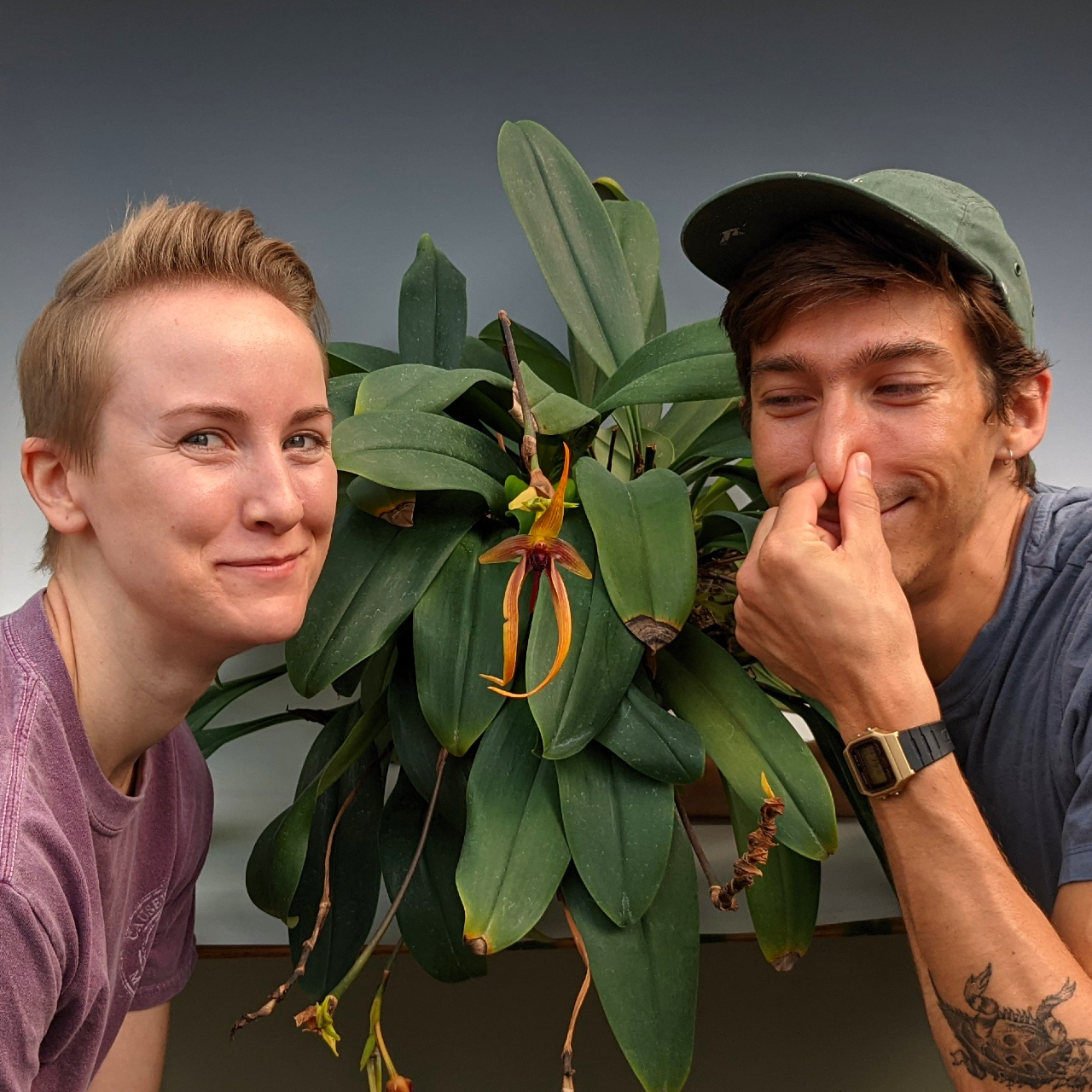
Two members of our staff thoroughly enjoying the proximity of this Bulbophyllum Doggy Dooflower!
An Abundance of Bulb Forms
Bulbophyllum, which are considered the largest group of orchids at over 2,000 species, are epiphytes that are known for their foul-smelling flowers and diversity in growth form. On one end of the scale, you have Bulb. phalaenopsis with its large, spherical pseudobulbs that produce long, glossy leaves that can reach several feet in length. On the other end, you have species such as Bulb. moniliforme and Bulb. ayuthayense with their miniature, flattened pseudobulbs that mark up only a few millimeters in diameter. Between these two exemplary ends of the pseudobulb diversity scale, there are plenty of Bulbophyllum species to collect and admire!
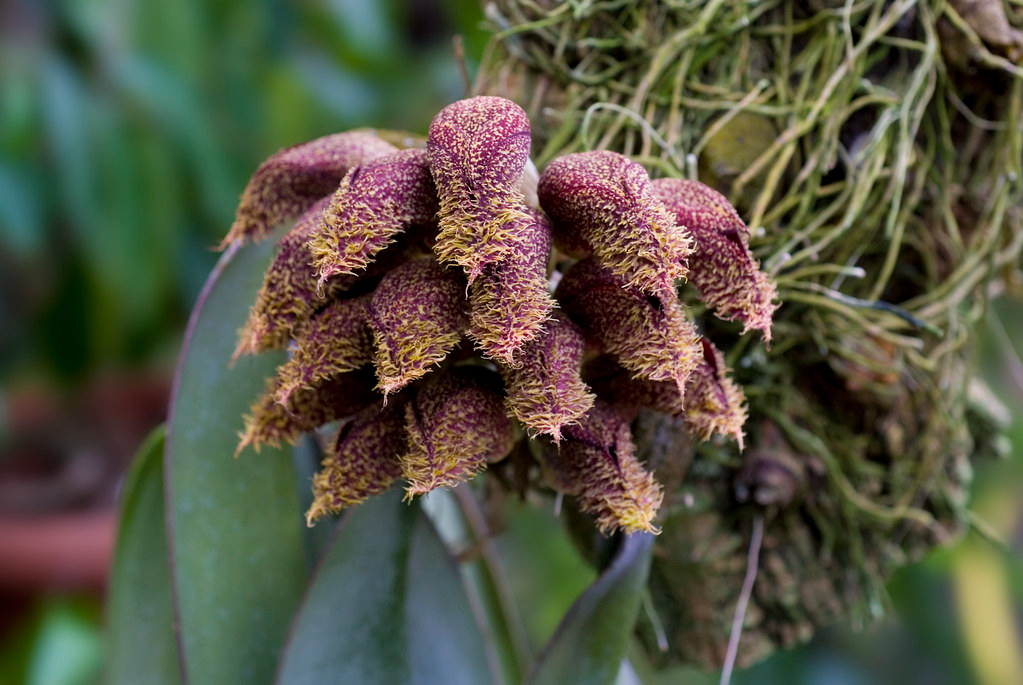
Bulb. phalaenopsis in full bloom. Photo Credit: Jardin Botanique
Fly-Attracting Flowers
While their vegetative nature can vary quite a bit, many of the orchids within this genus share some common floral traits. Despite the smell, the flowers are very attractive and all varieties have a hinged lip that works as a pollinator catapult! The foul-smelling flowers lure flies to land on the lip, which quickly tilts back – knocking the fly's head into the column where the pollen sacs are stored. These stick onto the insect, making it an unsuspecting pollen courier on its way to other
Bulbophyllum flowers! The flowers are typically short-lived, lasting up to a week. Fortunately, these bloom during the warm season, which means you can place it outside your household during that time if the smell is overbearing. While most household-size plants will produce light fragrances that are only noticeable when smelling right next to the flower, botanical specimens will make you aware from a few feet away when they are in full bloom. It is worth noting that there are a few exceptions to this foul-smelling flower rule, such as Bulb. odoratissimum, which has a sweet fragrance!
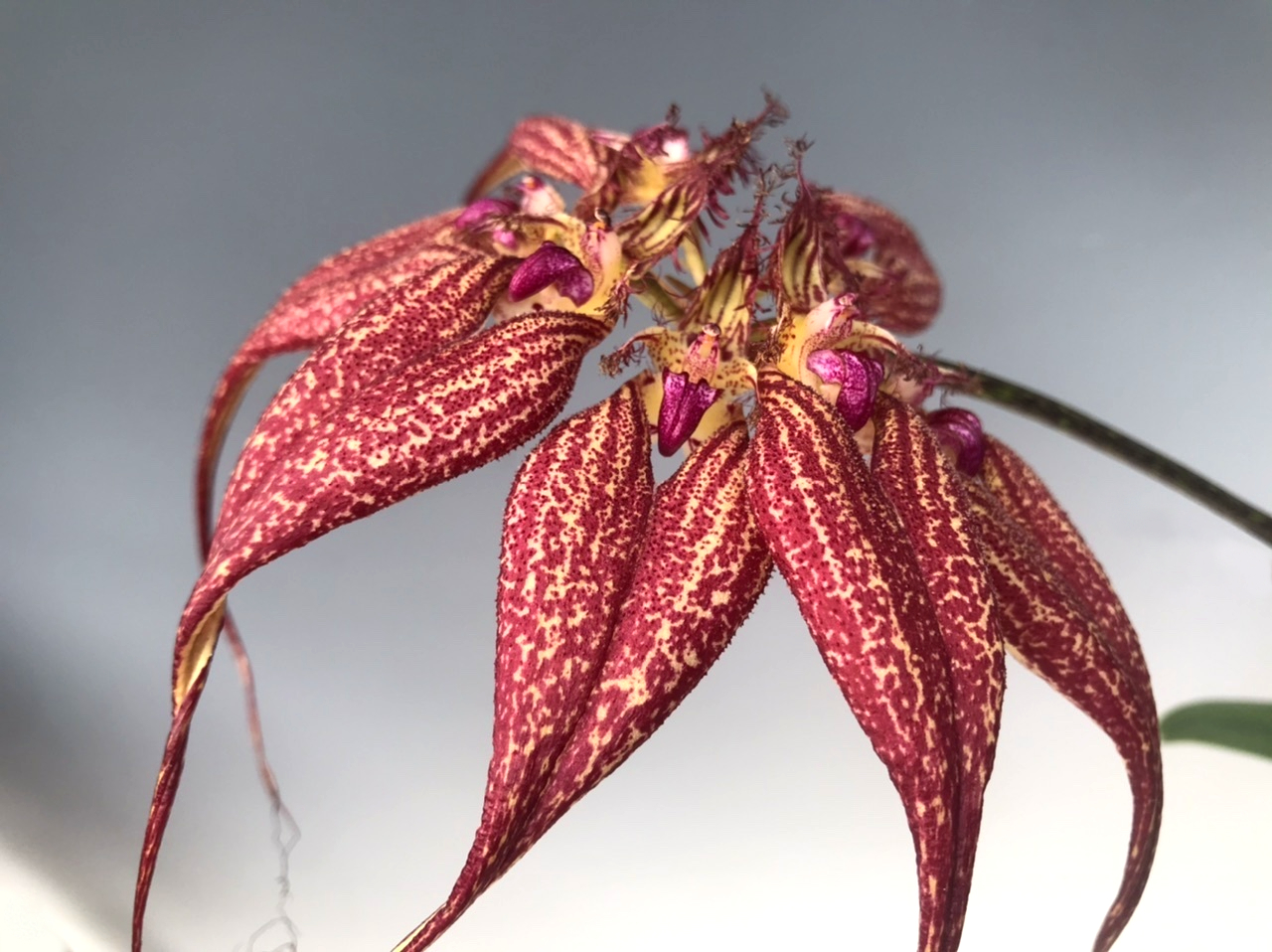
Bulb. rothchildianum 'Red Chimney' FCC/AOS
A Tropical Genus with Relatives Across the Globe
Bulbophyllum are predominately tropical-growing orchids that are distributed across the globe. From the tropics of Central and South America, through the jungles of Africa & Madagascar, over the foothills of the Himalayas, down to the lush island forests of Indonesia, New Guinea, and New Zealand – it's hard to find a tropical region in which Bulbophyllum are not found! New Guinea alone has over 600 species, leading many to believe this to be the island that harbored the most recent common ancestor for all species within the genus.
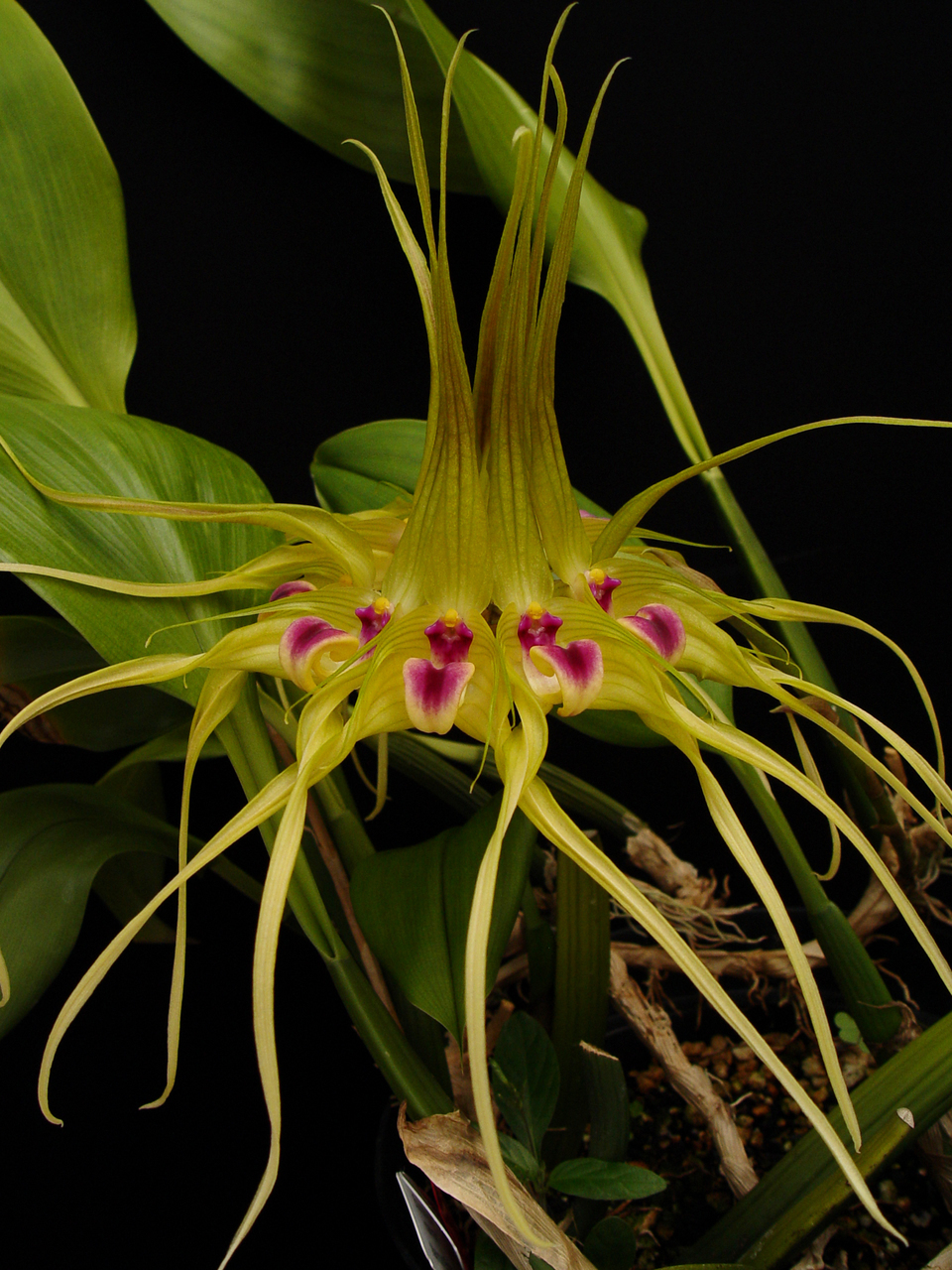
Bulb. ericssonii in full bloom.
How to Care for Your Bulbous Bloomer
Given the wide range of diversity within this genus, the best care instructions will be species-specific. Fortunately, you'll find these in the description and care table of each product on our site! That being said, there are general care guidelines that you can follow when it comes to caring for your
Bulbophyllum. Most species are subtropical to tropical growers that like to be kept above 65°F, so this is an excellent genus to grow outside whenever you have daytime highs that range from 70°F to 80°F. Otherwise, most households can retain a comfortable temperature to grow these plants with. In the wild these are almost always found growing in partial to full shade, however, hobbyists have found this genus to be tolerable of full sun, even going so far as to suggest that these orchids flower more often in such conditions.
In your best attempt to mimic natural conditions, keep humidity at or above 60%. This can be achieved by growing over a humidity tray or misting often while growing in a terrarium. Water daily if mounted on a cork slab, or as the media approaches dryness, if potted. Typically, you can expect to water several times per week, more or less depending on the climate you live in. Avoid letting the media dry out completely, as this is not a condition the tropical-growing species are accustomed to! If you acquire a temperate-growing species, be sure to check whether it requires a winter dry rest.
We have grown Bulbophyllum in multiple types of potting material and they do not seem to be very picky. Most collectors opt for sphagnum moss, but we have also had success growing them in coco-peat, peat moss mixed with bark and perlite, as well as our Orchiata Power and Power Plus Mixes. If your humidity is high or you are comfortable with watering frequently, these plants will grow excellently in open baskets or on slab mounts. Baskets can be filled with a potting medium and slabs can have a bit of Oregon or sphagnum moss behind the root system. Only opt for bare-rooting your Bulbophyllum onto a cork slab if you are growing in a greenhouse environment, where humidity is constantly high and plants are watered frequently.
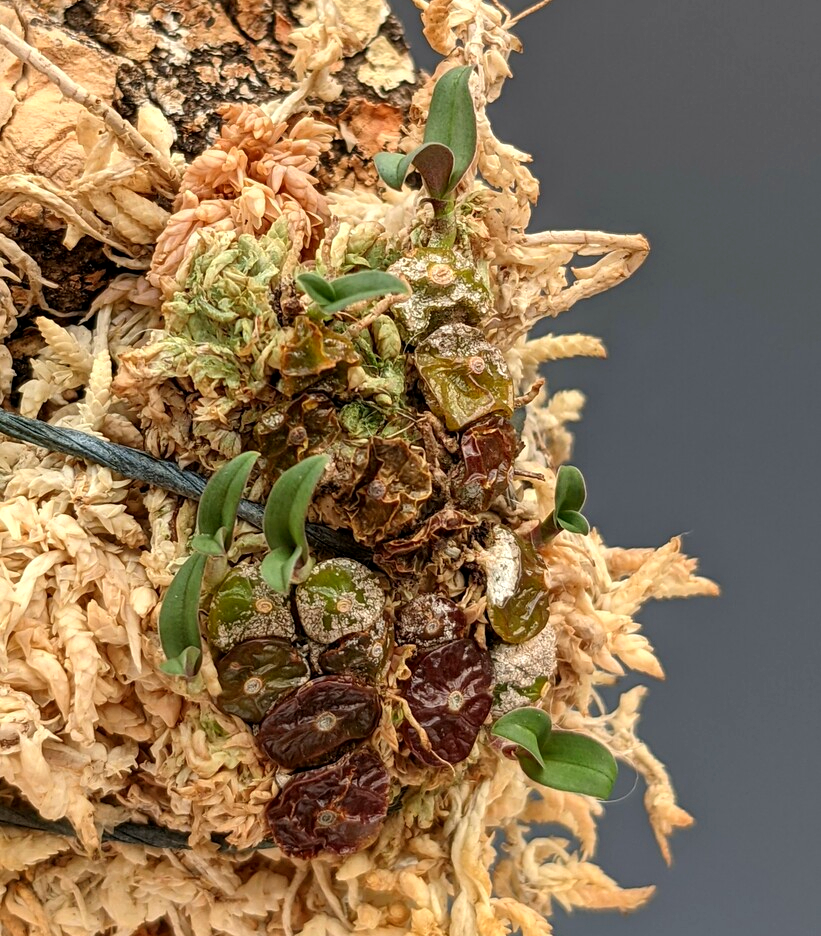
Bulb. ayuthayense putting out new growths.
So there you have it – a fascinating genus with a diverse array of growth forms and floral traits that are guaranteed to turn heads. Just be sure to advise any olfactory-sensitive friends of yours to pinch their nose before entering the room if one of these pungent plants is in bloom!
Cheers!
Adam Kostanecki & Jason Fischer

